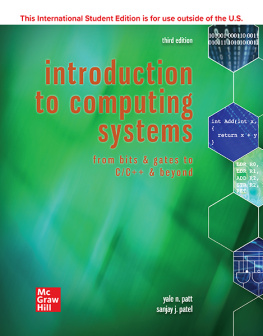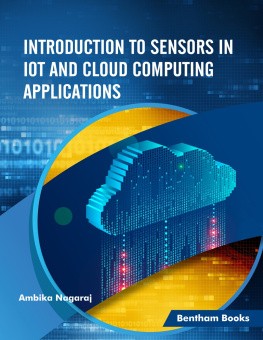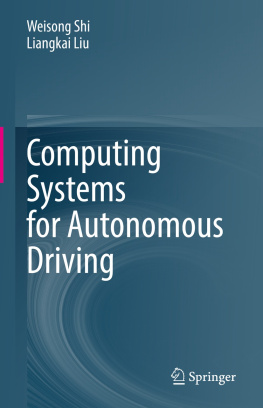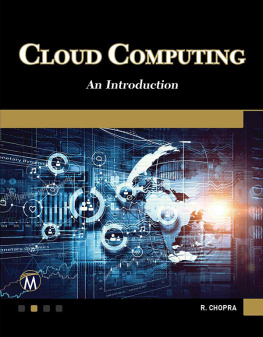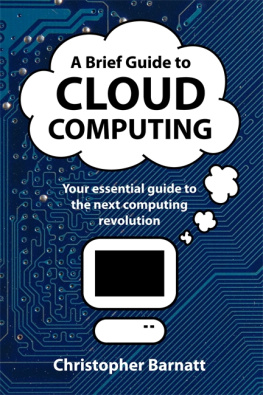Yale N. Patt - Introduction to Computing Systems, 3rd Edition
Here you can read online Yale N. Patt - Introduction to Computing Systems, 3rd Edition full text of the book (entire story) in english for free. Download pdf and epub, get meaning, cover and reviews about this ebook. genre: Home and family. Description of the work, (preface) as well as reviews are available. Best literature library LitArk.com created for fans of good reading and offers a wide selection of genres:
Romance novel
Science fiction
Adventure
Detective
Science
History
Home and family
Prose
Art
Politics
Computer
Non-fiction
Religion
Business
Children
Humor
Choose a favorite category and find really read worthwhile books. Enjoy immersion in the world of imagination, feel the emotions of the characters or learn something new for yourself, make an fascinating discovery.
- Book:Introduction to Computing Systems, 3rd Edition
- Author:
- Genre:
- Rating:5 / 5
- Favourites:Add to favourites
- Your mark:
- 100
- 1
- 2
- 3
- 4
- 5
Introduction to Computing Systems, 3rd Edition: summary, description and annotation
We offer to read an annotation, description, summary or preface (depends on what the author of the book "Introduction to Computing Systems, 3rd Edition" wrote himself). If you haven't found the necessary information about the book — write in the comments, we will try to find it.
Introduction to Computing Systems, 3rd Edition — read online for free the complete book (whole text) full work
Below is the text of the book, divided by pages. System saving the place of the last page read, allows you to conveniently read the book "Introduction to Computing Systems, 3rd Edition" online for free, without having to search again every time where you left off. Put a bookmark, and you can go to the page where you finished reading at any time.
Font size:
Interval:
Bookmark:
 Page vii
Page vii 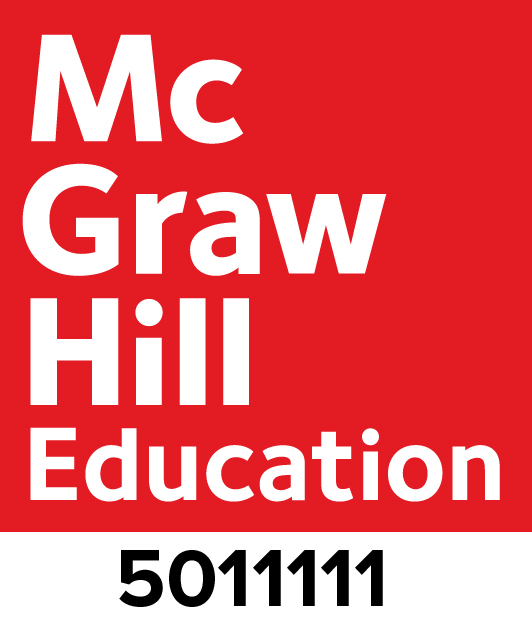

INTRODUCTION TO COMPUTING SYSTEMS
Published by McGraw-Hill Education, 2 Penn Plaza, New York, NY 10121. Copyright 2020 by McGraw-Hill Education. All rights reserved. Printed in the United States of America. No part of this publication may be reproduced or distributed in any form or by any means, or stored in a database or retrieval system, without the prior written consent of McGraw-Hill Education, including, but not limited to, in any network or other electronic storage or transmission, or broadcast for distance learning.
Some ancillaries, including electronic and print components, may not be available to customers outside the United States. This book is printed on acid-free paper.
This book is printed on acid-free paper.
1 2 3 4 5 6 7 8 9 LCR 24 23 22 21 20 19
ISBN 978-1-260-56591-1
MHID 1-260-56591-2
Cover Image: Front Cover Computing artYale N. Patt; Abstract image in green, orange and yellowDesign Pics/Tim Antoniuk; Abstract image in orange, green and yellowDesign Pics/Tim Antoniuk; Computer laptops on a blue abstract backgroundloops7/Getty Images; Illustration of streams of binary codeShutterstock/Tavarius
All credits appearing on page or at the end of the book are considered to be an extension of the copyright page.
The Internet addresses listed in the text were accurate at the time of publication. The inclusion of a website does not indicate an endorsement by the authors or McGraw-Hill Education, and McGraw-Hill Education does not guarantee the accuracy of the information presented at these sites.
Page vTo the memory of my parents,
Abraham Walter Patt A"H and Sarah Clara Patt A"H,
who taught me to value learning
even before they taught me to ride a bicycle.
To my loving family,
Amita, Kavi, and Aman.
Page vi Page xvFinally, the third edition! We must first thank all those who have been pushing us to produce a third edition. Since the publication of the second edition was so long ago, clearly the material must be out of date. Wrong! Fundamentals do not change very often, and our intent continues to be to provide a book that explains the fundamentals clearly in the belief that if the fundamentals are mastered, there is no limit to how high one can soar if ones talent and focus are equal to the task.
We must also apologize that it took so long to produce this revision. Please know that the delay in no way reflects any lack of enthusiasm on our part. We are both as passionate about the foundation of computing today as we were 25 years ago when we overhauled the first course in computing that eventually became the first edition of this book. Indeed, we have both continued to teach the course regularly. And, as expected, each time we teach, we develop new insights as to what to teach, new examples to explain things, and new ways to look at things. The result of all this, hopefully, is that we have captured this in the third edition.
It is a pleasure to finally be writing this preface. We have received an enormous number of comments from students who have studied the material in the book and from instructors who have taught from it. It is gratifying to know that a lot of people agree with our approach, and that this agreement is based on real first hand experience learning from it (in the case of students) and watching students learn from it (in the case of instructors). The excitement displayed in their correspondence continues to motivate us.
This textbook evolved from EECS 100, the first computing course for computer science, computer engineering, and electrical engineering majors at the University of Michigan, Ann Arbor, that Kevin Compton and the first author introduced for the first time in the fall term, 1995.
EECS 100 happened at Michigan because Computer Science and Engineering faculty had been dissatisfied for many years with the lack of student comprehension of some very basic concepts. For example, students had a lot of trouble with pointer variables. Recursion seemed to be magic, beyond understanding.
We decided in 1993 that the conventional wisdom of starting with a high-level programming language, which was the way we (and most universities) were Page xvi doing it, had its shortcomings. We decided that the reason students were not getting it was that they were forced to memorize technical details when they did not understand the basic underpinnings.
Our result was the bottom-up approach taken in this book, where we continually build on what the student already knows, only memorizing when absolutely necessary. We did not endorse then and we do not endorse now the popular information hiding approach when it comes to learning. Information hiding is a useful productivity enhancement technique after one understands what is going on. But until one gets to that point, we insist that information hiding gets in the way of understanding. Thus, we continually build on what has gone before so that nothing is magic and everything can be tied to the foundation that has already been laid.
We should point out that we do not disagree with the notion of top-down design. On the contrary, we believe strongly that top-down design is correct design. But there is a clear difference between how one approaches a design problem (after one understands the underlying building blocks) and what it takes to get to the point where one does understand the building blocks. In short, we believe in top-down design, but bottom-up learning for understanding.
A hallmark of our book continues to be the LC-3 ISA, which is small enough to be described in a few pages and hopefully mastered in a very short time, yet rich enough to convey the essence of what an ISA provides. It is the LC 3 because it took us three tries to get it right. Four tries, actually, but the two changes in the LC-3 ISA since the second edition (i.e., changes to the LEA instruction and to the TRAP instruction) are so minor that we decided not to call the slightly modified ISA the LC-4.
The LEA instruction no longer sets condition codes. It used to set condition codes on the mistaken belief that since LEA stands for Load Effective Address, it should set condition codes like LD, LDI, and LDR do. We recognize now that this reason was silly. LD, LDI, and LDR load a register from memory, and so the condition codes provide useful information whether the value loaded is negative, zero, or positive. LEA loads an address into a register, and for that, the condition codes do not really provide any value. Legacy code written before this change should still run correctly.
The TRAP instruction no longer stores the linkage back to the calling program in R7. Instead, the PC and PSR are pushed onto the system stack and popped by the RTI instruction (renamed Return from Trap or Interrupt) as the last instruction in a trap routine. Trap routines now execute in privileged memory (x0000 to x2FFF). This change allows trap routines to be re-entrant. It does not affect old code provided the starting address of the trap service routines, obtained from the Trap Vector Table, is in privileged memory and the terminating instruction of each trap service routine is changed from RET to RTI.
Next pageFont size:
Interval:
Bookmark:
Similar books «Introduction to Computing Systems, 3rd Edition»
Look at similar books to Introduction to Computing Systems, 3rd Edition. We have selected literature similar in name and meaning in the hope of providing readers with more options to find new, interesting, not yet read works.
Discussion, reviews of the book Introduction to Computing Systems, 3rd Edition and just readers' own opinions. Leave your comments, write what you think about the work, its meaning or the main characters. Specify what exactly you liked and what you didn't like, and why you think so.

